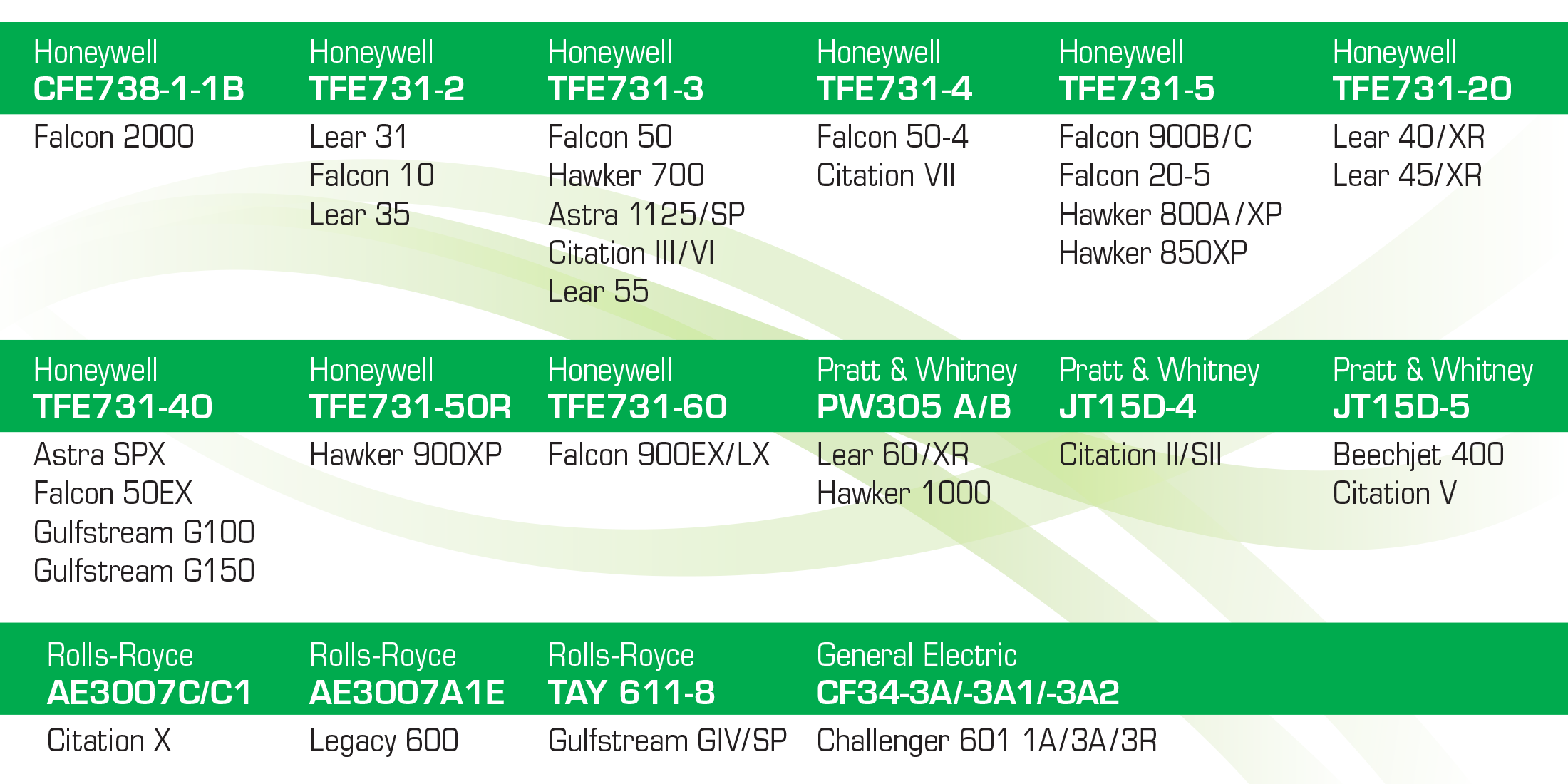Click Here to View This Page on Production Frontend
Click Here to Export Node Content
Click Here to View Printer-Friendly Version (Raw Backend)
Note: front-end display has links to styled print versions.
Content Node ID: 413292
Get to know the power of the program
EAP stocks parts and rental engines, and the volume of work it sends to engine MRO shops means it has first access to slots and better pricing. Operators not on engine programs usually wind up paying full retail rates for their engine service and can have a difficult time locating parts and rental engines.
While it’s exciting to see the business aviation market in full recovery mode, it’s more important than ever to plan and prepare for engine repairs and rental engine needs. With increased utilization has come part shortages and backlogs at the engine shops. EAP notes that’s when hourly maintenance programs can really benefit operators. In addition to the program’s coverage, its power extends to its ability to provide parts, rental engines, shop slots and improved pricing. All of this ultimately translates into dispatch reliability, which in the end is the most important aspect for the client.
“MRO shops are going to offer their best availability and pricing to their best customers, and that’s the hourly maintenance programs,” says Sean Lynch, EAP’s managing director. “In addition to paying premium pricing for engine maintenance, an operator not on an engine program may pay extra for items that are typically covered by a program, like engine removal and reinstallation or shipping if the engines need to be sent to the engine shop.”
But an engine program does even more. Maintaining engines using an hourly maintenance program helps retain the value of the aircraft and ensures the equity in the engines is passed on to the next owner. There is a good reason banks prefer not to finance an airplane that is not enrolled (at 100 percent coverage) on an engine program.
An asset that may have kept flying for another eight to 10 years is now irreversibly taken out of service for preventable economic reasons by not being enrolled on a program. When the price of maintenance and other upgrades exceeds the value of the aircraft, the aircraft slip into a salvage value category making them much easier to classify as Beyond Economic Repair.
Keeping aircraft in service keeps the industry moving
The Engine Assurance Program (EAP) has developed a full-service engine program providing comprehensive coverage and full service, which is of particular benefit to aging aircraft. Now these still highly versatile airframes can stay in service longer.
“Falcon 50s, 900Bs, Hawker 800XPs and Lear 45s are 75 percent more likely to be taken out of service and parted out if they are not on an engine program when the engines come due for heavy inspections,” says Lynch. “The engines served by EAP have logged millions of hours of service. On average, aircraft for sale without an engine program tend to sit on the market longer and capture below wholesale pricing when they do sell. Our goal is to keep these aircraft in the air and out of the scrap heap.”
When EAP keeps an aircraft flying for six or eight more years, there is an entire revenue stream/trickle-down effect that feeds the whole industry and benefits all—pilots, parts resellers, maintenance companies, fuel resellers, engine shops, avionics shops, and on and on. Engines programs power the entire industry.
The proof is in the program
EAP’s hourly engine maintenance program provides operators of aging aircraft with dispatch reliability, increased residual value, enhanced customer service and meaningful cost savings, while using the same high-quality engine MRO shops as the other programs.
EAP covers all variants of the Honeywell TFE731 as well as General Electric, Rolls-Royce and Pratt & Whitney engines. With the newly added CFE738, which powers the Falcon 2000, EAP covers a large portfolio of engine models on some of the most popular business jets. 
Operators are coming to see the value of hourly maintenance programs: EAP recently enrolled its 280th engine/APU, a TFE731 which powers a Hawker 800XP. EAP’s client base also has expanded to include operators from all over the world, including several fleet operators and multiple foreign air force subcontracts.
“Clients are motivated by customer service, pricing and responsiveness. When a client calls, they expect full attention until their situation is resolved, whether it is scheduled or an unscheduled AOG,” says Lynch. “Being on an engine program gives you access to a level of service you can’t obtain otherwise.”
To that end, EAP stocks a robust pool of rental engines and APUs to support their fleet including the addition of another CFE738-1-1B for the Falcon 2000s. “We’ve never had a customer go without a rental engine or APU when they need one which an impressive achievement in this current market,” added Lynch.
For more information, visit www.eap.aero.